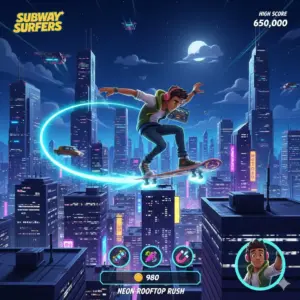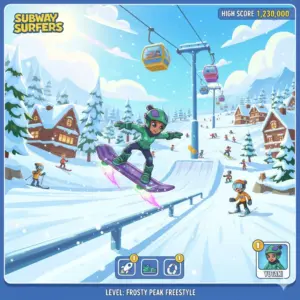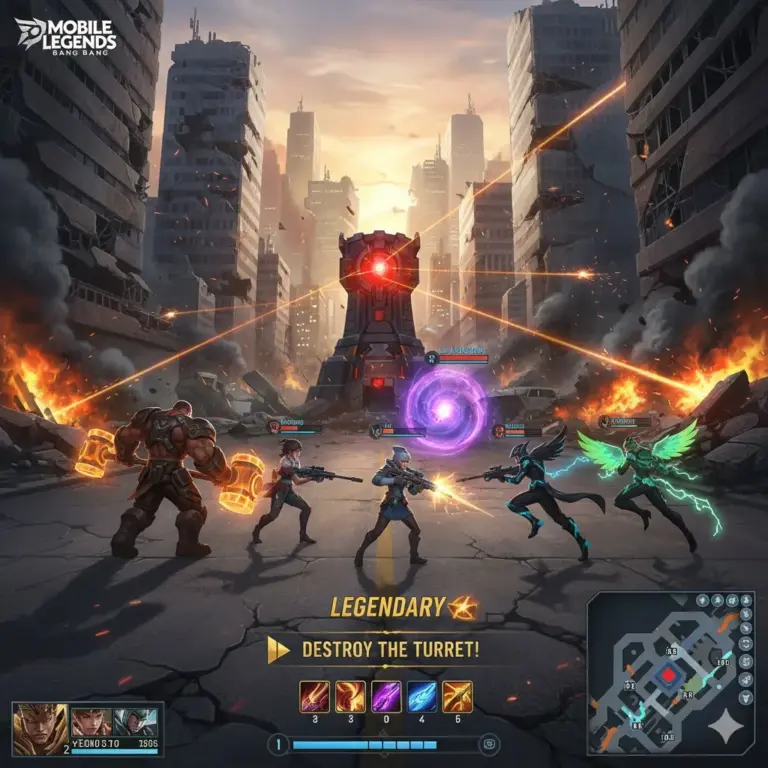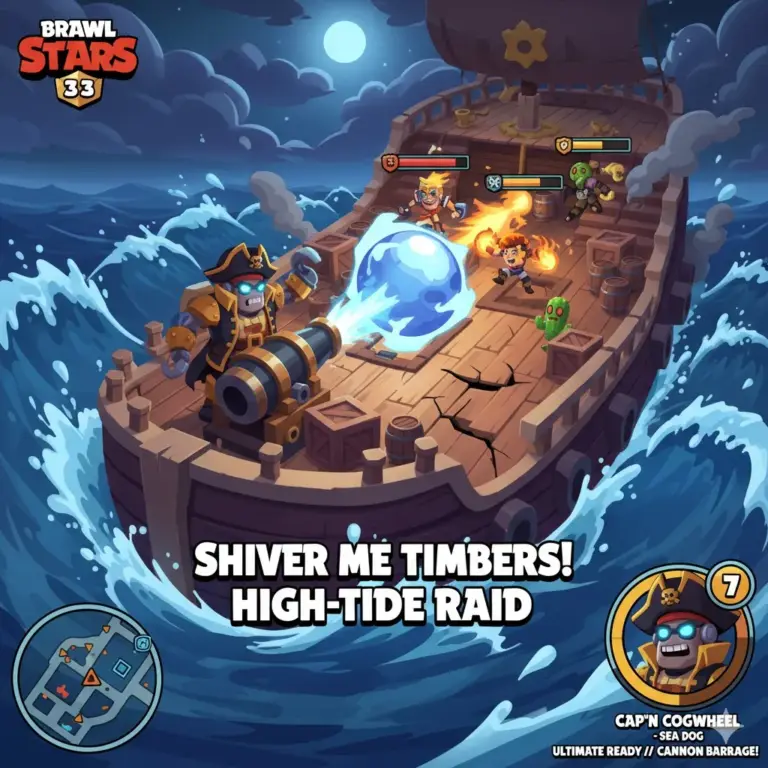Subway Surfers Review 2025: The King of Endless Runners or an Ad-Filled Time Capsule?
In the vast, churning ocean of the mobile App Store, “legend” is a term thrown around lightly. Yet, one game stands as a true colossus, a digital titan that has outlasted trends, console generations, and countless competitors. That game is Subway Surfers.
Launched in 2012, in what feels like a different geological epoch of mobile gaming, Subway Surfers by SYBO Games wasn’t just a hit; it was a phenomenon. It was the first mobile game ever to cross one billion downloads, and it has since rocketed past four billion, making it the most downloaded mobile game of all time.
But in 2025, a full 13 years after its debut, is it still a game, or is it a time capsule? In a world of Genshin Impact, Royal Match, and high-intensity battle royales, does this simple, three-lane runner still have a place on your phone?
We laced up our sneakers, grabbed a hoverboard, and dodged the grumpy Inspector one more time. This in-depth 2025 review analyzes the timeless magic, the brilliant retention strategy, and the modern, ad-fueled reality of the undisputed king of endless runners.

The Core Gameplay: A Masterclass in “Flow State”
At its heart, Subway Surfers is the textbook definition of an endless runner. You are a graffiti artist (Jake, Tricky, Fresh, or one of 100+ others) caught in the act. You run endlessly along a three-lane train track, pursued by a portly Inspector and his dog.
The controls are the standard that the genre is now built on:
- Swipe Up: Jump
- Swipe Down: Roll
- Swipe Left/Right: Change lanes
That’s it. There is no “attack” button, no complex combos. The goal is singular: survive.
What makes this simple loop so eternally addictive is not the goal, but the feeling. Subway Surfers is a masterclass in “flow state.” The controls are perfectly responsive, the hitboxes are fair, and the game quickly ramps up in speed, demanding your full, zen-like focus. You aren’t thinking; you are reacting.
The monotony of the run is broken by four classic power-ups:
- Coin Magnet: Sucks in all nearby coins.
- Super Sneakers: Allows you to jump on top of trains.
- 2x Multiplier: Doubles your score accumulation.
- Jetpack: Lifts you above the tracks entirely, showering you in coins, safe from all obstacles.
Grabbing one of these provides a momentary thrill, a small burst of power and safety that resets your focus.
But the most important mechanic, and the game’s single greatest contribution to the genre, is the Hoverboard. By double-tapping the screen, you summon a hoverboard for 30 seconds. This board is, in essence, a one-hit shield. If you crash, you don’t lose; you just lose the board and keep running.
This single item is a stroke of psychological genius. It completely removes the frustration that defined its predecessor, Temple Run. In that game, one tiny mistake, one missed swipe, ended your 20-minute run. In Subway Surfers, the hoverboard is your “oh shit” button, an insurance policy that encourages riskier, faster, and more confident play.

The “World Tour”: The Secret to Infinite Replayability
This is it. This is the secret sauce. This is why Subway Surfers is not just a 2012 relic but a 2025 chart-topper.
While Temple Run gave you the same brown temple, forever, Subway Surfers introduced the “World Tour.”
Every three to four weeks, the entire game changes. The app updates, and the setting moves from Paris to Tokyo, from Marrakesh to Buenos Aires, from New York to Mumbai. This is not just a cheap “skin”; the entire visual identity of the game is overhauled:
- Scenery: The tracks, tunnels, and backgrounds are completely new.
- Obstacles: The trains are redesigned (like Japan’s Shinkansen), and track-side barriers are themed (like yellow NYC taxis or Greek columns).
- Music: A new, themed-remix of the iconic theme song plays.
- Collectibles: A new, city-themed item (like a small Eiffel Tower or a Matryoshka doll) is scattered on the tracks for a weekly “Word Hunt.”
This seasonal model, which SYBO pioneered long before the “Battle Pass” was a household term, does three brilliant things:
- It Cures Visual Staleness: The game never gets boring to look at. Just as you’re tiring of the Greek coast, you’re suddenly zipping through the subways of Chicago.
- It Drives Collection: Each new city brings at least one new, exclusive character and hoverboard, available for a limited time. This creates a powerful, yet low-stress, FOMO (Fear of Missing Out) loop.
- It Creates a Rhythm: It gives players a reason to check back in every month. It’s the “What’s new?” factor that most single-player mobile games lack.

Progression: The Multiplier Is the Real High Score
For a new player, the goal is simple: beat your friend’s high score. But you’ll quickly notice that your score just can’t keep up. This is because the real progression in Subway Surfers is the Score Multiplier.
You start at a 1x multiplier. Your friend might be at 30x. This means that for every one point you get, they get 30. How do you raise it?
By completing Missions.
The game gives you sets of three missions at a time, such as “Collect 500 coins,” “Jump 20 times,” or “Use 2 Hoverboards.” Completing a full set levels up your multiplier, permanently. This chase, from 1x up to the cap of 30x, is the game’s long-term RPG element.
This system is brilliant because it gives purpose to every run. You’re no longer just running for a high score; you’re running to “Dodge 10 barriers in a single run.” It’s a task-based system that cleverly teaches you advanced mechanics while building your account’s permanent power.
This, combined with cosmetic progression—unlocking dozens of characters and hoverboards with their own unique perks (like speed boosts or a sticky-glide)—creates a game that is simple on the surface but has a surprisingly deep (and endless) chase for completionists.

Monetization in 2025: The Ad-Runner Reality
The 2012 version of Subway Surfers was simple. The 2025 version is a finely tuned, modern monetization machine. It is still free, but it is saturated with ads and purchase-prompts.
Is it Pay-to-Win? Let’s define “winning” as “getting the highest possible score.” Yes. It is absolutely, unequivocally pay-to-win.
Here’s why:
- Keys for Revives: Keys are the game’s premium currency. You can use them to “Revive” yourself when you crash. You can find keys in-game, but very slowly. Or you can buy an infinite supply. A player with enough money can never lose, chaining revives (at increasing cost) to achieve scores in the billions.
- Premium Hoverboards: Some boards, often bought in bundles, have game-changing perks like “Super Speed” or “Double Jump” that are not available to F2P players.
- Ad-to-Revive: Even for F2P players, the game offers a “Watch an Ad to Revive” option once per run. This means the high score is not a test of pure skill, but of skill + one free mistake.
This completely invalidates any “competitive” aspect of the high-score leaderboard. But here’s the trick: 99% of players don’t care.
The true competition in Subway Surfers is just beating your own previous high score. The monetization is aimed at a casual audience, not competitive-e-sports players. The F2P path is completely viable:
- Watch ads for mission multipliers.
- Watch ads for free coins, keys, and mystery boxes.
- Watch ads to revive.
You can “pay” for everything in the game by either (A) spending your money or (B) spending your time watching 30-second ads. This “Ads-as-Currency” model is the core of the modern F2P experience, and Subway Surfers has mastered it.

Final Verdict: Is Subway Surfers Worth Playing in 2025?
Subway Surfers is a “desert island” game. It’s one of the few you could keep on your phone, and only on your phone, and likely never get bored. The core loop is polished to a mirror shine, providing the perfect 5-minute “flow state” experience. The “World Tour” system is a work of genius, a seasonal model that has kept the game visually fresh and compelling for over a decade.
It is no longer a “pure” game. It is a platform for selling character skins and serving advertisements. The high-score chase is fundamentally “broken” by pay-to-win mechanics.
But none of that matters.
This is the perfect “waiting room” game. It’s a digital fidget spinner that respects your time—a single run can be two minutes or two hours. It defined a genre, outlived its clones, and remains, after 13 years, the undisputed, un-toppled, and unending king of the endless runners.
You should play Subway Surfers in 2025 if:
- You want the most polished, responsive, and varied endless runner on the market.
- You are a casual player who loves collecting cosmetics.
- You need a perfect “five-minute distraction” for your commute or waiting for an appointment.
- You love the simple, brain-clearing “flow state” of a good reflex game.
You should AVOID Subway Surfers in 2025 if:
- You are a competitive player who wants a “pure” skill-based leaderboard.
- You have zero patience for frequent (though mostly optional) video ads.
- You are looking for a game with deep strategy or a story.
Final Score:
- Gameplay (Core Loop): 5/5
- Retention (World Tour & Progression): 5/5
- Monetization & “Fairness”: 2/5
- Overall Value (as a F2P time-waster): 4.5/5



